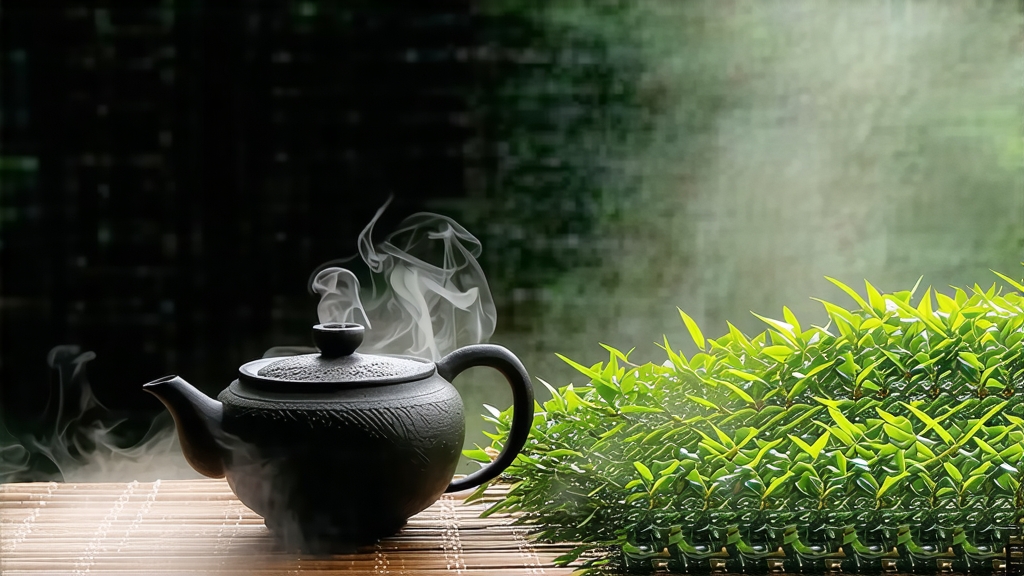
Tucked away in the humid, karst-pocked southwest of China, the small district of Liu Bao in Guangxi has been quietly producing one of the most intriguing members of the dark-tea family for more than 1,500 years. While Pu-erh has become the global shorthand for fermented tea, Liu Bao remains a well-kept secret even inside China—an omission that is finally being corrected as specialty importers and sommeliers discover its deep, resinous sweetness and its uncanny ability to settle the stomach after the richest meal. To understand Liu Bao is to watch Chinese tea craft turn geography itself into flavor: the camphor forests that shade the gardens, the mineral rivers that provide the wet-piling water, and the bamboo baskets that breathe through decades all leave fingerprints in the cup.
History: From Border Tribute to Maritime Currency
The first written record appears in the Tang dynasty (618-907) when Liu Bao tea was listed among the “tribute teas” sent to the emperor. Because Guangxi bordered the ancient kingdoms of Vietnam, the tea traveled south as readily as north; by the Qing era it was ballasted in the holds of Chinese junks sailing for Southeast Asia. In Malaya and Singapore the tin-mine coolies discovered that a cup of Liu Bao prevented the dysentery that thrived in the tropical camps, and the tea became a de-facto currency, traded for opium, rubber and even passage home. Entire warehouses in 19th-century Kuala Lumpur were devoted to aging the bricks; some of those 80-year-old cakes still surface at auction today, their wrappers stamped with the double-phoenix brand of the Wuzhou Tea Company.
Varieties: One Leaf, Four Faces
Although all Liu Bao is made from the large-leaf Assamica sub-species native to Guangxi, four commercial styles have emerged:
- San Cha – “loose tea,” the quickest to market, given only six months of wet-piling and sold as a mellow everyday drink.
- Basket Liu Bao – the classic form, steamed and packed into 30–50 kg bamboo baskets that allow micro-oxidation for decades; the bamboo imparts a green, coconut-like top note.
- Brick / Cake – hydraulic-pressed rectangles (250 g–2 kg) favored by Hong Kong tea investors who age them in climate-controlled limestone caves.
- “Golden Flower” Liu Bao – a modern hybrid where the factory inoculates the pile with Eurotium cristatum, the same yellow mold that flecks Fu brick, yielding a dried-apricot sweetness and a powdery, saffron-colored liquor.
Craft: When Water, Heat and Time Collude
Harvest begins in late April, when two leaves and a bud reach the length of a thumb knuckle. After a brief outdoor withering the leaves are wok-fried at 180 °C for eight minutes—just enough to denature the green enzymes while preserving the leaf’s thick cuticle. The crucial step is wet-piling: the semi-dry leaf is heaped 70 cm high on cement floors, sprayed with mineral river water, and covered with jute sacks. Inside the pile temperature climbs to 55 °C; over the next 18–25 days workers turn the pile every two days, aerating and re-spraying until the leaf turns chestnut-brown and exudes a scent reminiscent of damp camphor and jackfruit. After piling the tea is steamed, shaped, and placed into the signature bamboo baskets lined with wild banana leaf. The baskets are then moved to humid basements where they rest for a minimum of three years; premium lots age for fifteen or more, developing the prized “betel-nut” aroma—an earthy, spicy note that perfumers liken to oud and pipe tobacco.
Brewing: The Clay, The Coal, The Crash of Steam
Liu Bao forgives the novice yet rewards the obsessive. A 150 ml Yixing teapot seasoned only with dark teas is ideal; its iron-rich clay softens the tea’s tannins and amplifies the camphor note. Begin by rinsing 6 g of leaf for five seconds with water just off the boil—this “awakens” the compressed cake and washes away any storage dust. The first proper infusion should last 10 seconds, each subsequent infusion adding five. A good basket Liu Bao will yield 12 steeps, the liquor moving from espresso-black to rosewood-amber while the flavor migrates from forest floor to dried longan to, finally, a clean